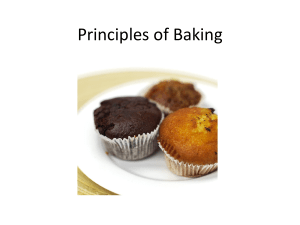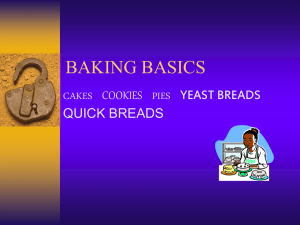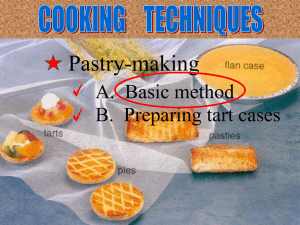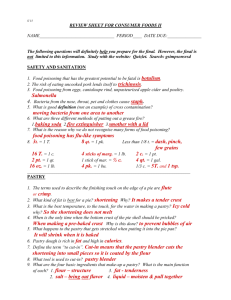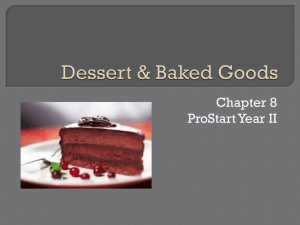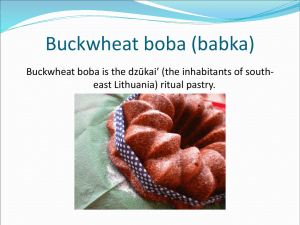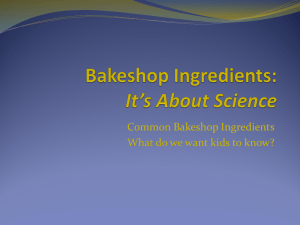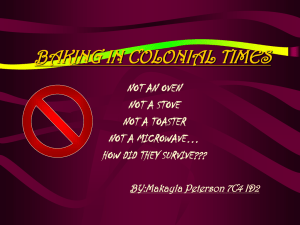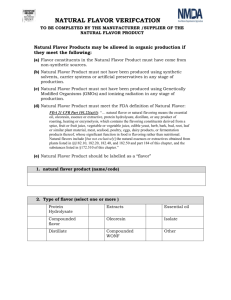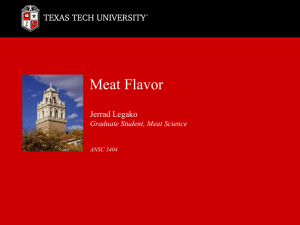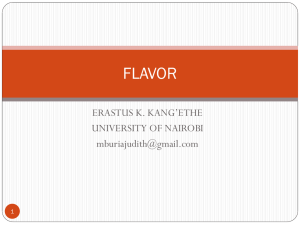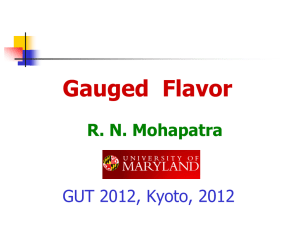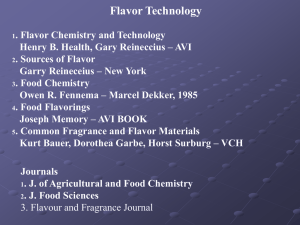Introduction to Baking
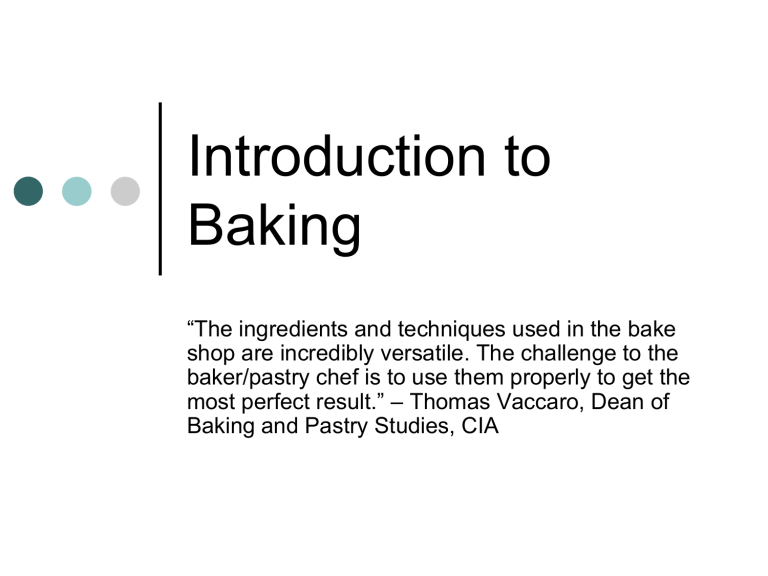
Introduction to
Baking
“The ingredients and techniques used in the bake shop are incredibly versatile. The challenge to the baker/pastry chef is to use them properly to get the most perfect result.” – Thomas Vaccaro, Dean of
Baking and Pastry Studies, CIA
Learning Target
To understand that the ingredients used in baking function in specific ways and will help determine the final texture, flavor and color of baked goods.
PT: Demonstrate understanding of ingredients used in baking, as well as measuring, mixing, shaping and baking techniques for different types of baked goods.
Standards
PLC 8.0 Apply food preparation and cooking techniques to execute standard recipes for consumption.
Essential Questions
What are the different ingredients used in baking?
How does each ingredient used in baking affect the final outcome?
Before we begin…Is there a difference between baking and regular cooking?
1.
2.
Yes!
No Changes to product can be made once it goes into the oven
Requires more advanced planning- must take into consideration cooling and serving time
So this means – FOLLOW RECIPE AND
MEASURE INGREDIENTS PRECISELY!!!
What are the different ingredients used in baking?
Flour
Eggs
Leaveners
Fat
Sweetners
Salt
Flour
Most important ingredient
Amount of protein (gluten) and starch determines how flour will behave in recipe.
Gluten – protein in flour that when moistened and “worked” will develop long, stretchy strands. These strands become STRONGER the more your dough is handled.
Kinds of Flour
All-Purpose
Most common type of flour
Blend of low and high pro. wheat
Bread
Most appropriate for most yeast-bread recipes
Has more pro. Than A-P
Cake
Used in most cake recipes, many cookie and muffin recipes
Provides less chewy, more tender texture
Less pro. Than either A-P or bread flour
Storage
Airtight container – use within 8 mo.
Unopened – up to two years
Eggs
Provides dough with moisture
helps it stick together
Water in eggs expand, help to rise
Adds protein – firmer, drier product
Egg yolks – rich, golden color to final product
Egg wash – glossy sheen (whites = shine, whites+yolk = golden hue)
Leaveners
Increases the volume of a dough or batter by adding air or other gas
3 types – organic, chemical, physical
Organic Leavener
Yeast
Tiny, single-celled organism
Needs moisture, warmth and food
(usually sugar)
Yeast cells give off CO
2 and alcohol when they grow and reproduce, causing bread to rise
Chemical leavener
Baking Powder
Reacts to moisture and heat
Releases CO
2 to cause dough/batter to rise
Baking Soda
Similar to baking powder, but also needs an acid.
Sift with flour/other dry ingre. To break up clumps/mixed well
If not = tunnels or air pockets.
Physical Leaveners
Steam
Moisture from butter, eggs or other liquids
Liquids heat, turn to steam, expands
Air
Creaming/ whipping incorporate air
Air trapped result in pockets that give height as well as soft, spongy texture
Fat
Contribute to:
Flavor – some add own flavor (butter), encourages browning – extra flavor
Texture – type of fat and how it is worked into batter or dough determines texture – smooth to brittle
• More fat = softer the batter/dough, causes spreading
• Texture contrast – crisp outside, soft inside
Freshness
•
Extends life of baked good by holding in moisture
Fats – solid at room temp
Oils – liquid at room temp
Kinds of Fats
Butter
Lard
Made from cream
Adds flavor and flakiness to pastry/biscuits
Made from refined pork fat
Unique flavor, makes flakey pastry
Esp. good in pastry for savory dishes
Shortening
Made from vegetable oil – processed to make it solid at room temp
Lacks flavor, used like butter, adds extraordinary flakiness
Margarine
Similar to shortening
Lacks flavor, used as substitute for butter
Kinds of Oils
Neutral oil
Canola, corn, safflower – lacks flavor
Vegetable Oil
Belnd of neutral oils – lacks flavor
Flavored oils
Nut oils (walnut, peanut, etc.)
Olive oils
Has a distinct flavor
Sweetners
Add sweetness and flavor
Provide texture, appealing color and flavor when sugars carmelize
Help products rise – attract moisture, makes goods softer, longer lasting
Kinds of Sweetners
Granulated Sugar – refined sugar cane or beets
ORDINARY white sugar
Superfine aka castor/baker’s sugar
Finely ground granulated sugar
Confectioner’s aka Powdered Sugar
Ground into a fine,white, easily dissolveable powder
Kinds of Sweetners
Brown
Molasses + white sugar
Molasses
Byproduct of sugar refining
Thick, sweet, brownish/black syrup
Distinctive, slightly bitter flavor
Honey – bee bypoduct
Maple Syrup – boiled down maple tree sap
Corn Syrup – made from cornstarch
Salt
In small amounts:
balances other flavors and makes them more vivid
Controls the growth of yeast
In large amounts:
Salt’s own flavor comes to the forefront
Will kill yeast
Summary
Write 3-5 sentences summarizing what you have learned.

